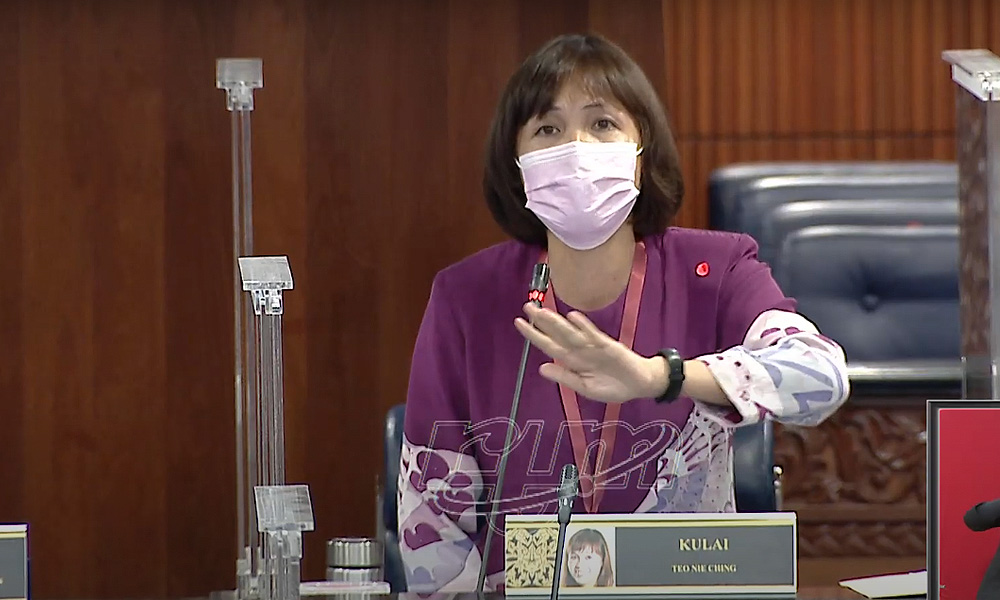Recently, a Sabah elected representative raised the issue of “digital poverty” which most people view as the economic capacity of an individual to possess a computer, laptop or tablet and have access to a high-speed internet connection.
In his speech at the state assembly on Nov 16, Usukan state assemblyperson Salleh Said Keruak said the term digital poverty also applied to individuals who were not proficient in information and communication technology (ICT) skills.
The former federal communications and multimedia minister was quoted as saying that a person is considered digitally poor if he/she is not ICT literate because, in today’s world, many people are working and conducting their businesses and dealings online.
On the same day he spoke, several MPs debating the Supply Bill 2021 at the Dewan Rakyat also brought up the digital divide issue and the education challenges posed by the Covid-19 pandemic.
Now that schools have closed and will only reopen in January, more than 4.7 million students nationwide will have to resort to using online education tools. This figure does not include the thousands of students of public and private institutions of higher learning who are also affected by the Covid-19 crisis.
Ever since the pandemic hit the nation, Malaysian parents have come to accept the fact that digital education has now become an integral part of the new norm.
Kulai MP Teo Nie Ching, in her speech in the Dewan Rakyat on Nov 16, said 37 percent of, or 1.7 million, students under the Education Ministry did not have the devices to enable them to participate in online teaching and learning sessions. They did not possess a laptop, tablet or computer which they would need to follow an online class.

This means that about 1.7 million primary and secondary school students fall into the “digital poverty” category and the reality of this is sad indeed.
Ahmad Johnie Zawawi (GPS-Igan), in his speech in the Dewan Rakyat, urged the government to look into the issue of internet connectivity in rural and interior areas.
“There they don’t have access (to the internet) and have no computers. Many parents cannot afford to buy a computer,” said the MP from Sarawak, who also proposed that a special fund be allocated to address the digital divide issue.
Under Budget 2021, an allocation of RM50.4 billion – 15.6 percent of the national budget’s total allocation of RM322.5 billion – has been proposed for the Education Ministry. Nevertheless, a big portion of the allocation for closing the digital divide has been placed under the care of the Communications and Multimedia Ministry.
The federal government has set aside an allocation of RM500 million to bridge the digital divide through the National Digital Network (Jendela) initiative aimed at enhancing Internet connectivity at 430 schools nationwide.

A total of RM7.4 billion has been allocated to the Malaysian Communications and Multimedia Commission (MCMC) to widen broadband services in 2021 and 2022.
Going back to the digital poverty issue, Budget 2021 also includes an initiative to allocate RM150 million to the Cerdik Fund which will be used to provide laptops to 150,000 students at 500 schools as a pioneer project that will be supervised by Hasanah Foundation.
This initiative, however, will only help a portion of the 1.7 million students who don’t possess the necessary devices to facilitate e-learning. It must be remembered that a huge number of these students hail from B40 households whose monthly income is less than RM4,800.
The Nov 16 debate at the Dewan Rakyat also saw Sim Chee Keong (Harapan-Bukit Mertajam) suggesting tax exemptions for the purchase of computers for two children per family. The suggestion is good but then a majority of the parents concerned don’t earn enough to pay income tax.
In view of the Covid-19 pandemic, online dealings and interactions, as well as e-learning, have become the norm and, as such, internet access is no longer an option but a necessity now.
For most households, their monthly telecommunications bill is often higher than their other two utility bills despite the fact that there is still room for improvement in terms of broadband access and services provided by telecommunications companies.
My electric and water bills come to about RM120 a month, while my monthly telecommunications bill (with Internet access) is about RM250 for three smartphones shared by my family members.
Budget 2021’s RM1.5 billion allocation to facilitate internet connectivity in the form of a credit of RM180 per person will benefit eight million people in the B40 group. This of course will be beneficial for the target group.
However, telecommunications companies can do more for the rakyat by reducing their data charges without compromising the quality of internet access.
With their profits running into billions of ringgit, these companies should step in to help the government and the people who are impacted by the Covid-19 crisis.
I feel it will be good for the government to consider allowing families stuck in the “digital poverty” group to make a withdrawal for education purposes from Account 2 of their Employees Provident Fund savings (the amount to be withdrawn can be determined by EPF).

The money withdrawn can be used to purchase computers, laptops or tablets for their children. Currently, EPF members can make withdrawals from Account 2 for education but it only covers the cost of their studies.
Some “smart” economists or well-off individuals out there may dismiss my suggestion as a simplistic solution but only this way can the affected students be equipped with the necessary devices to enable them to participate in the e-learning process and stay on course in their education.
The parents caught in the clutches of “digital poverty” are not begging from others and neither will they take what rightfully belongs to others – all they want is to use their own hard-earned savings to ensure a good future for their children.
By allowing them to dip into their EPF savings, the government need not look for new allocations to enable them to buy a computer or laptop for their children.
Only through this mechanism, can the 1.7 million primary and secondary school students free themselves from the clutches of “digital” poverty.
(The views expressed here are the writer’s own)
- Bernama




No comments:
Post a Comment
Note: Only a member of this blog may post a comment.